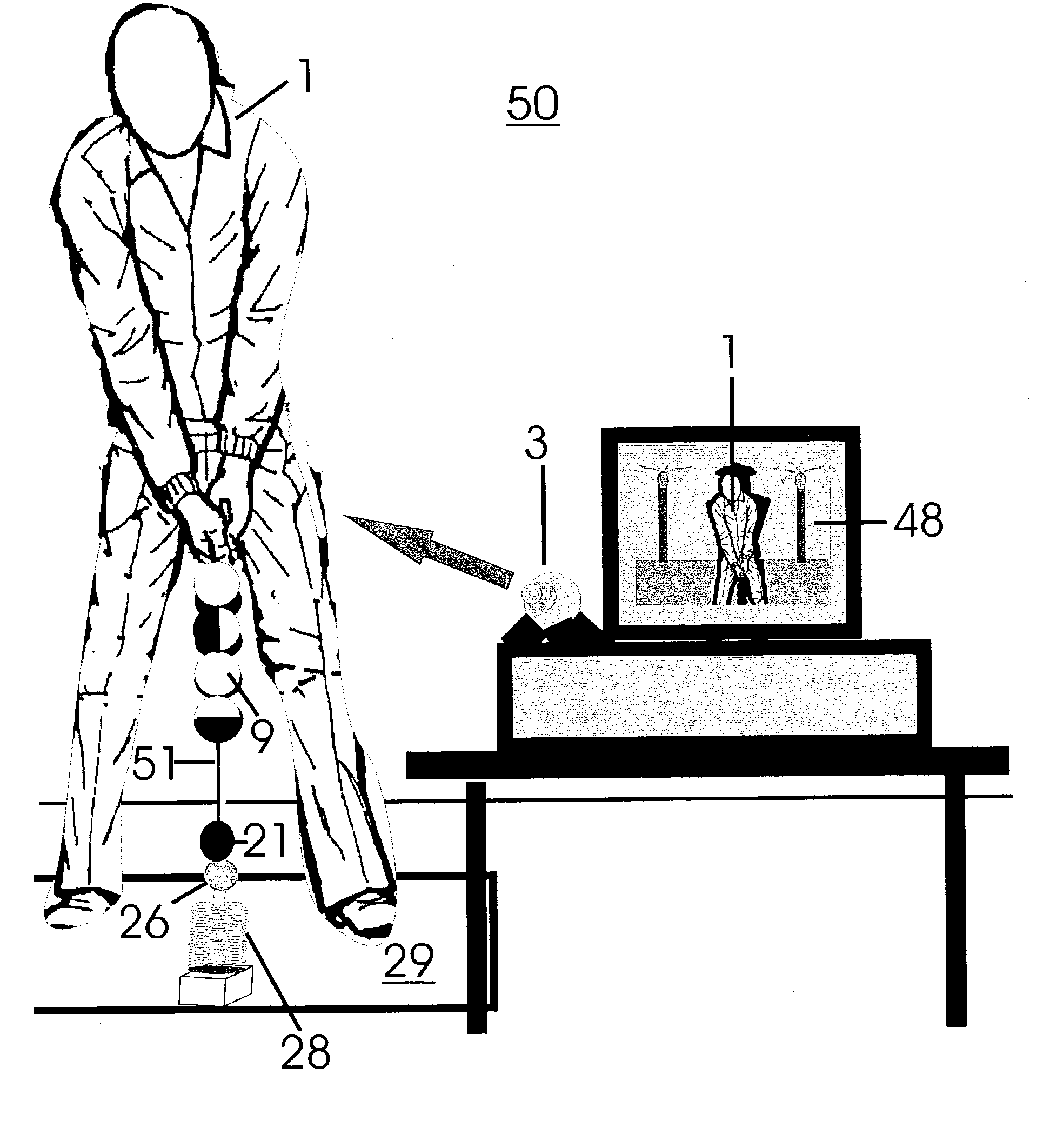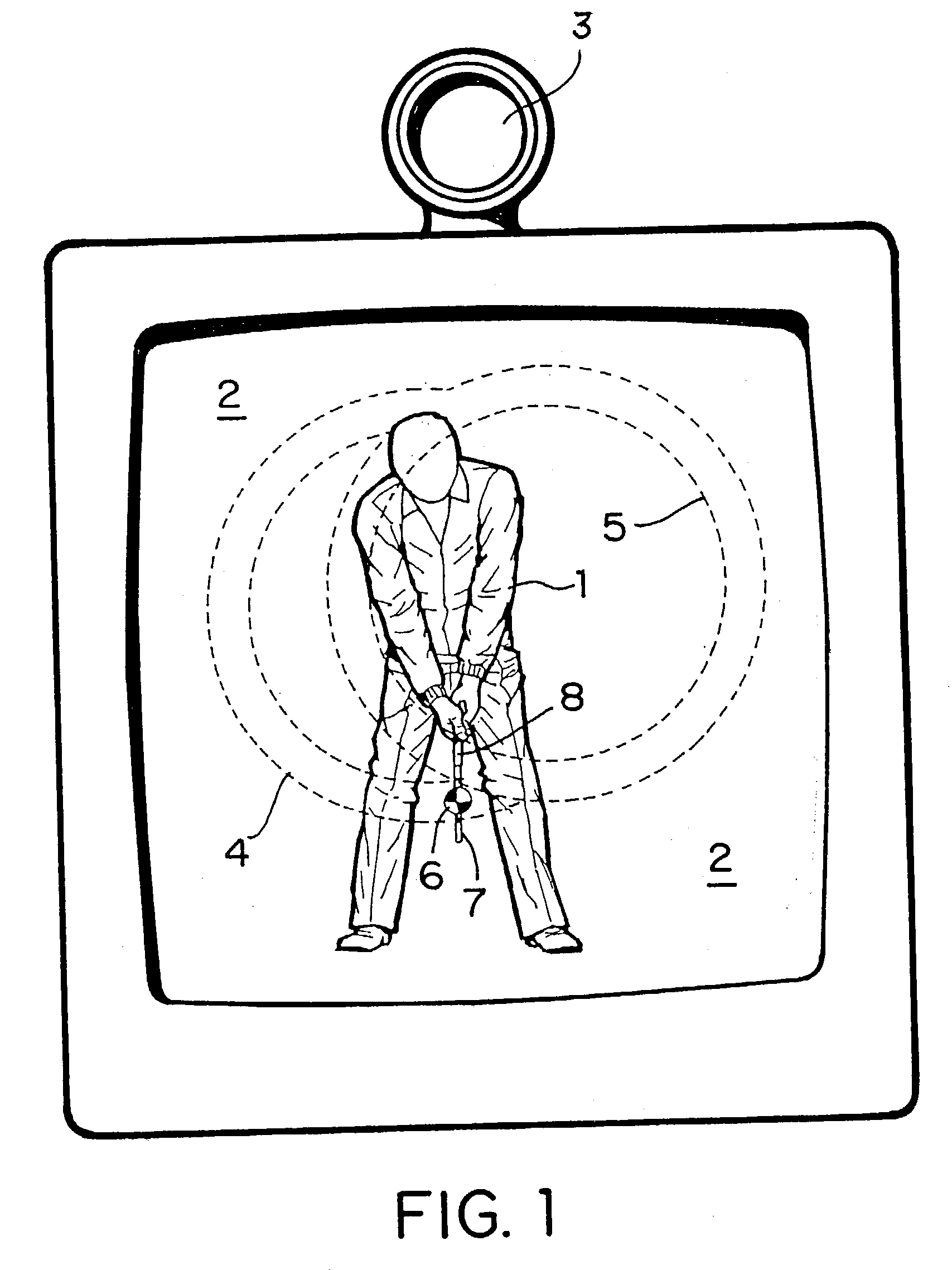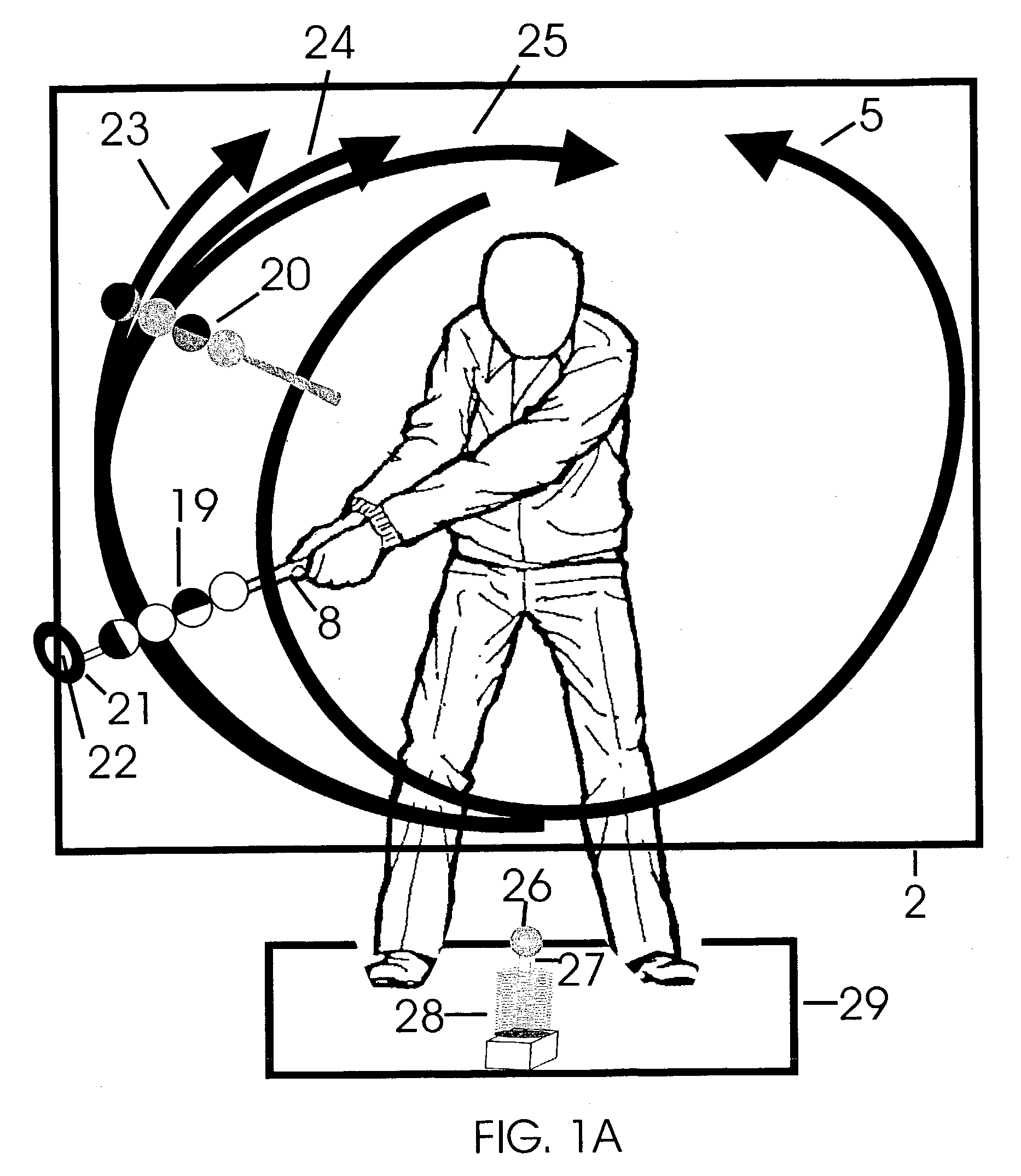Interactive method and apparatus for tracking and analyzing a golf swing in a limited space with swing position recognition and reinforcement
a golf swing and position recognition technology, applied in the field of interactive methods and apparatus for tracking and analyzing golf swings in a limited space with swing position recognition and reinforcement, can solve the problems of not describing or teaching correct golf club movements in terms of geometric position of golf clubs, club head rotation and three-dimensional shaft direction at every point of golf swings, and unable to accurately produce golf club movements. accurate and correct golf club movements, display and measure the effect of accuracy and accuracy
- Summary
- Abstract
- Description
- Claims
- Application Information
AI Technical Summary
Benefits of technology
Problems solved by technology
Method used
Image
Examples
Embodiment Construction
[0062] FIG. 1 shows a live display of a student golfer who is standing in front of a desktop computer monitor display 2. The student's image as captured by an attached video camera 3 is displayed with his or her ideal swing patterns superimposed as a back swing plane orbit 4 and a forward swing plane orbit 5. The golfer is just beginning his or her back swing as indicated by the position of the spherical attachment 6 to his golf club shaft 7 that has been installed just below the grip 8.
[0063] FIG. 1A shows a live display of a student golfer who is standing in front of a computer monitor display outline 2 corresponding to a close-up, limited space method. The student's image is displayed with ideal swing patterns superimposed as a back swing plane orbit for short irons 23, a back swing plane orbit for medium irons 24, a back swing plane orbit for long irons or woods 25, and a forward swing plane orbit 5. The golfer is just beginning his or her back swing as indicated by the position...
PUM
 Login to View More
Login to View More Abstract
Description
Claims
Application Information
 Login to View More
Login to View More - R&D
- Intellectual Property
- Life Sciences
- Materials
- Tech Scout
- Unparalleled Data Quality
- Higher Quality Content
- 60% Fewer Hallucinations
Browse by: Latest US Patents, China's latest patents, Technical Efficacy Thesaurus, Application Domain, Technology Topic, Popular Technical Reports.
© 2025 PatSnap. All rights reserved.Legal|Privacy policy|Modern Slavery Act Transparency Statement|Sitemap|About US| Contact US: help@patsnap.com



